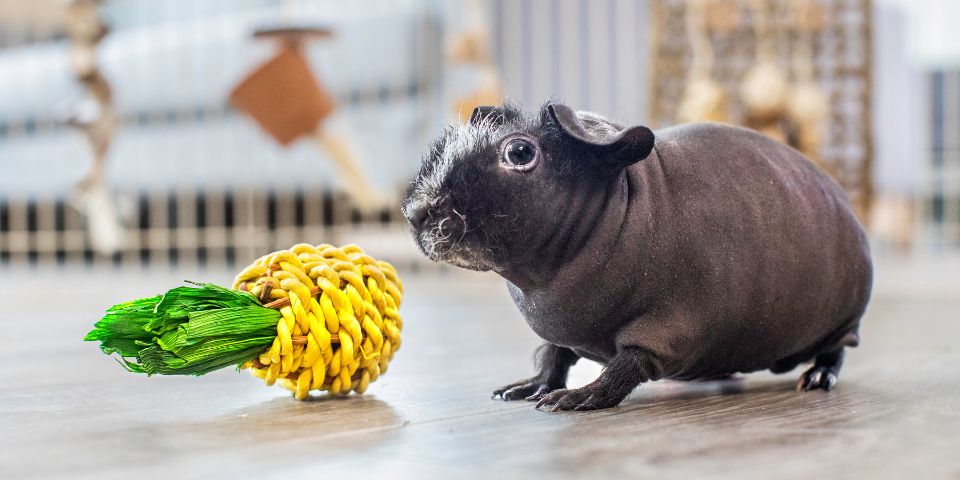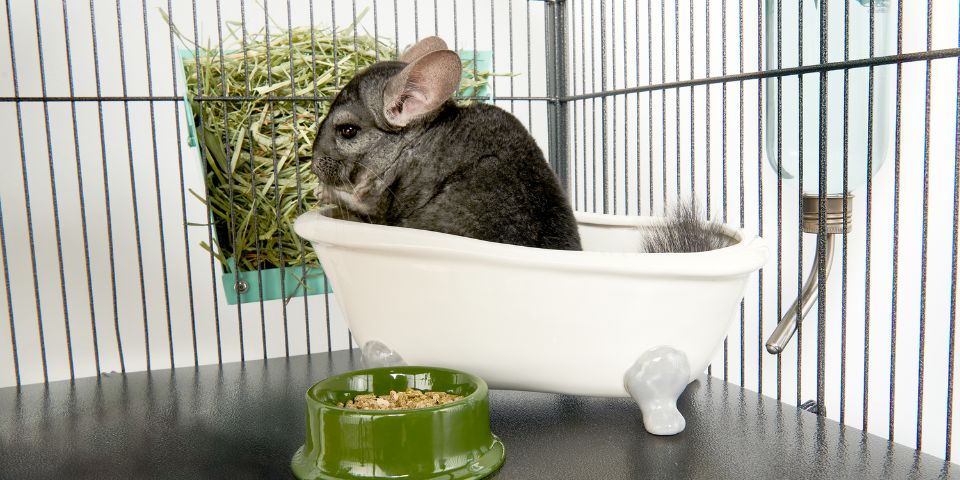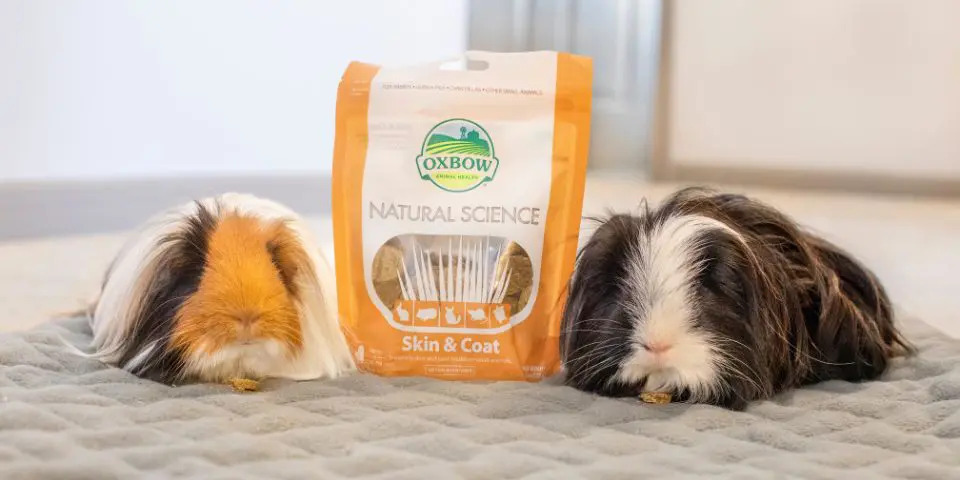Author: Kellie Hayden
Updated: March 2, 2024
When you think about keeping your pet’s major organs healthy, you may first think about heart, gastrointestinal, or lung health. Less often do we think that skin, the largest organ on mammals, should also be factored in when it comes to the organ health of our pets. Considering that your pet’s skin protects the body from potentially dangerous abiotic and biotic matter, it may be one of the most important organs that mammals have.
In addition to keeping out foreign materials and providing protection, your pet’s skin also plays important roles in controlling hydration and assisting in thermoregulation. Some veterinarians even refer to skin as the “window” into an individual’s health, as it’s the easiest organ to see when performing health checks. This means that skin is one of the best indicators of your little one’s underlying health.
Monitoring your pet’s skin is a great, easy way to evaluate their health and wellbeing. Because skin is an organ that does so much work for the body, related diseases can occur in small mammals. Skin disease can sometimes be very minimal, self-limited, and eventually take care of itself, while other times skin disease in small mammals can be very severe and even life-threatening.
Some of the most common presentations of skin disease in small mammals include:
- Alopecia
- Dermatitis
- Ectoparasites
Alopecia
Alopecia, simply put, is hair loss. Hair loss in small mammals can be minimal and localized to one area of the skin, or it can be very diffuse and spread around your pet’s body.
Some instances of alopecia are normal and can even be expected. For example, rabbits can go through heavy shed cycles where they lose hair all over their body. When a doe (a female rabbit) is pregnant or about to have kits, she may also pluck hair from her belly to use as insulation and nesting material to keep the babies warm and comfortable.
On the other end of the spectrum, there are instances of alopecia that are considered abnormal and an indication of a health issue or disease. To treat alopecia in these cases, the underlying health condition needs to be addressed.
Underlying health conditions that may lead to alopecia in small animals can include:
- Mites
- Self-barbering
- Hormonal issues
Mites
Mites are an ectoparasite that can cause painful, incessant itching. Mites are typically species-specific, but on rare occasion may jump from one species to another, including from animals to humans. Ectoparasites such as mites can be extremely uncomfortable; in severe cases, pets may have seizures due to the intense itching experienced. Mites should always be quickly treated by an exotics veterinarian with a product that is safe for your pet’s particular species.
Self-Barbering
Self-barbering, where a pet chews on their own fur, is one example of abnormal alopecia. Some cases of barbering may be less severe, where fur is just shortened by chewing. Other cases of barbering may result in patches of hair loss where the small animal has chewed fur off at the skin. Regardless of the severity, self-barbering can indicate that your pet is experiencing pain or discomfort at the site where they are barbering. This can also be a sign of stress or boredom if they aren’t getting enough enrichment. Learn more about if your pet may be exhibiting signs of stress.
Hormonal Issues
Hormonal issues can result in hair loss in small pets, just like they can in humans. For example, hair loss can be a symptom of insulinoma in ferrets. Hair loss can also be a symptom of ovarian cysts in female small mammals.
When considering hair loss, pet parents should always be cognizant of both where the hair loss is occurring on their pet’s body, how severe the hair loss is, the time period the hair loss has occurred, and any changes in your pet’s life or your husbandry routine. Communicating all of this information to your exotics-savvy veterinarian is key to understanding the cause of your pet’s alopecia.

Dermatitis in Small Mammals
Dermatitis can be defined as inflammation of the dermis (the skin).
Symptoms of dermatitis in small mammals can include:
- Dry and itchy skin
- Redness or a rash
- Flaking skin
- Blisters (which can ooze or get crusty)
- Other ongoing issues that can lead to thickened skin.
When we see these dermatitis symptoms in small mammals, it means something abnormal is at play. What this abnormality is, however, can be one of many wide-ranging causes, such as a bacterial or fungal infection, repeated irritation from an object within the pet’s environment, or an abrasion, meaning a skin-deep injury.
Dermatitis can sometimes be the only symptom present in a small pet, or can be paired with other skin and coat conditions described here.
Ectoparasites in Small Mammals
External parasites, such as mites or fleas, are also unfortunately a condition that veterinarians see in small mammals. Ectoparasites may be the direct or indirect cause of other conditions discussed here; mites especially can cause dermatitis due to repeated scratching, and alopecia can occur in severe mite cases.
In addition to seeing dermatitis and alopecia, pet parents may also see that there is discharge coming from skin in areas where the dermis is very inflamed from itching and scratching due to ectoparasites.
For more information about parasites, check out our article on endoparasites and ectoparasites.

Dealing with Dry Skin in Small Mammals
Some breeds of small mammals can be prone to certain skin conditions, or especially prone to dry, flaky, or itchy skin. For example, “skinny” or hairless guinea pigs can have skin that’s considered to be more dry than that of normal furred guinea pigs.
Some pet parents that live in areas where climate conditions are especially dry may need to moisturize their pet’s skin occasionally to keep this organ healthy and functioning like it should. Rather than turning to the internet for moisturizing options, we highly encourage pet parents to discuss safe options with their vet. While some internet remedies may on the surface appear safe and are immediately effective, they may also have unintended long-term effects on your little one’s health.
Depending on your region, it may be helpful to have a humidifier running and filled regularly. Some pet parents have found that keeping ambient humidity at a higher level helps ease their pet’s symptoms of dry skin (please note that this is not recommended for chinchilla households without veterinary sign-off). Make sure to clean this humidifier regularly to avoid causing respiratory issues for your little one or for yourself.
Many small pets, even those who are not currently having skin and coat health issues, can benefit from supplements designed to maintain skin and coat health. Skin supplements for small mammals may be an option for your pet, but be sure to consult with your veterinarian before adding any type of supplement into your pet’s daily routine.
Regardless of the severity of your little one’s skin condition, it’s important to be monitoring the condition closely, documenting any changes, and communicating these issues to your veterinarian.

Should I Ever Give My Small Pet A Bath?
Many pet parents wonder whether they should bathe their small pet. It’s a logical question, since we bathe, and cats and dogs on occasion need a bath. The good news here is that rabbits, guinea pigs, and other small mammals are very good at keeping themselves clean—you have likely seen your small pet washing their face with their paws. Because they are good at keeping themselves clean, they rarely, if ever, need a bath!
Bathing is generally not recommended for small animals, as their self-cleaning habits tend to take care of their skin and coat health without assistance. When we start bathing small animals, we introduce new chemical agents that can disrupt the skin’s natural environment of oils. Having a water bath can in fact lead to skin disease!
Very few exceptions to this no-bath rule in rabbits and guinea pigs can include:
- Cleaning your guinea pig’s grease gland, which generally is only needed once a year, sometimes even less frequently. If you need to bathe your guinea pig in this instance, limit soap and water only to the places that require it.
- Cleaning your pet’s coat if they are covered with urine or loose stools. If your pet is covered with excrement, this can indicate a serious underlying medical condition that must be treated with the help of an exotics veterinarian. Remember that small pets are good at keeping themselves clean—when they fail to do so, it means something is not quite right.
In both of these exceptions to the no-bath rule, make sure that all soap is removed from your pet’s coat and that your pet is at least towel-dried afterwards to keep them from getting too cold. Some pet parents use hair dryers, but we recommend against this. The air may be too hot and harm your pet, and hot air may increase skin dryness. In some cases, the extremely hot air can even lead to heat stroke in your little one.
Instead of using a hair dryer, we recommend giving your pet an additional towel to burrow into after you towel dry them and monitor them to make sure they aren’t chewing on or eating pieces of the fabric. A small heating pad specifically designed for small mammals can also be added to a corner of their habitat to help keep your pet warm as their fur dries. If you use a heating pad, make sure there is enough space that your pet can step on and off the pad completely so they can regulate their body temperature effectively.
Important Note About Chinchillas and Water
Chinchillas should never be bathed with water! Chinchilla fur is so dense that it can mold if exposed to moisture. They can also get wet eczema (or hot spots) from water baths. Ensure that your chinchilla has access to a dust bath with pet-safe volcanic ash, such as our Poof! Chinchilla Dust.
Skin & Coat Supplement Support For Small Mammals
One option that may help improve your little one’s overall skin and coat health is Oxbow’s Skin & Coat Supplement. Our hay-based tablets contain beneficial omegas to support the health of your pet’s dermis. Before giving your pet a new supplement, always consult a veterinarian to ensure that it can safely fit into your pet’s daily diet.

In summary, skin is the largest organ on our body, and monitoring our small pet’s skin for signs of skin disease is an essential part of pet-parenthood. Whether it be big or small, if you ever find a skin abnormality, make time to take a photo and contact your exotics veterinarian for advice.
